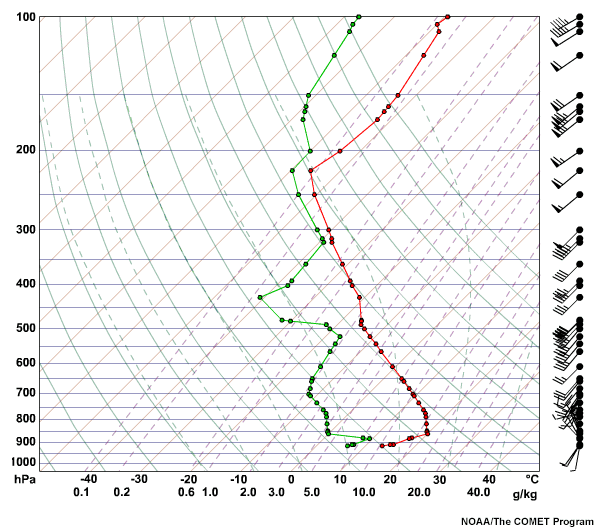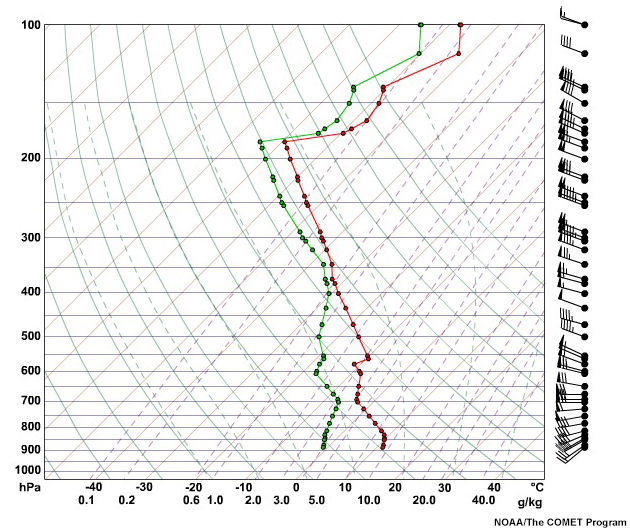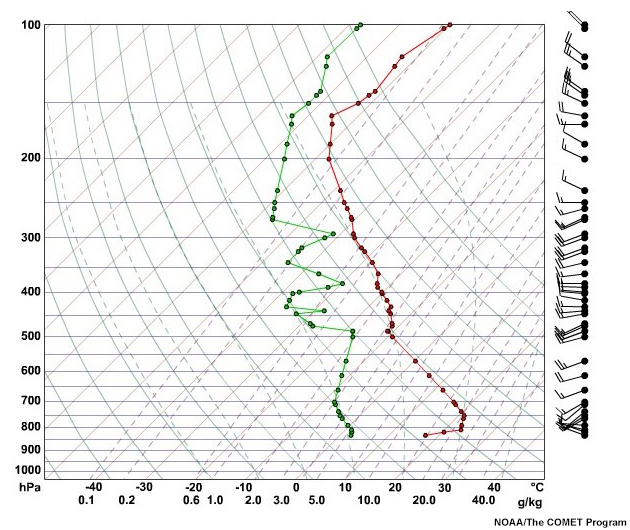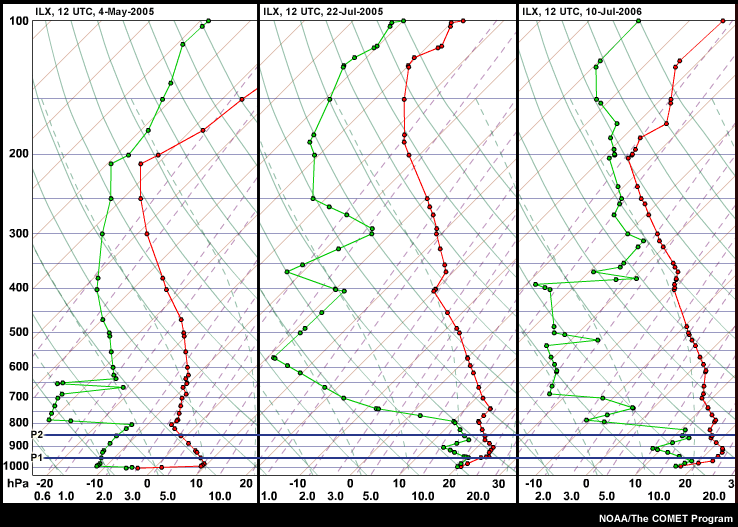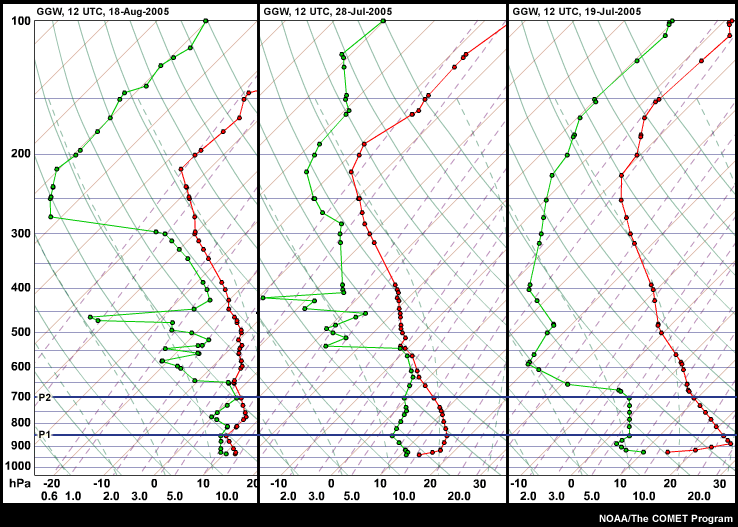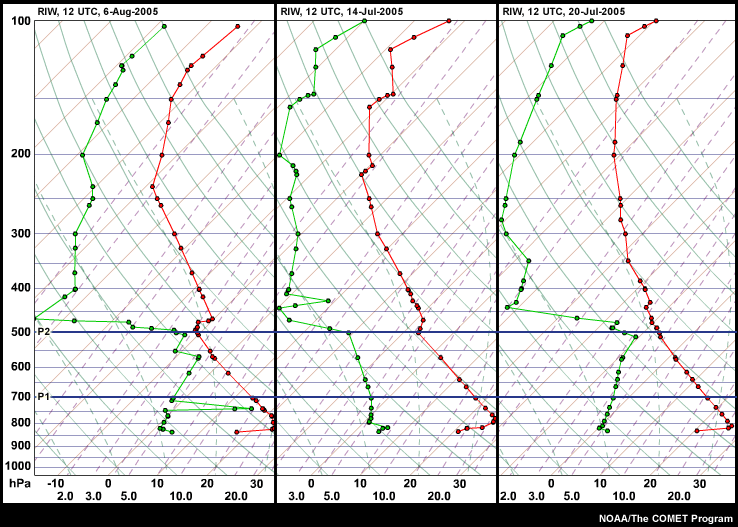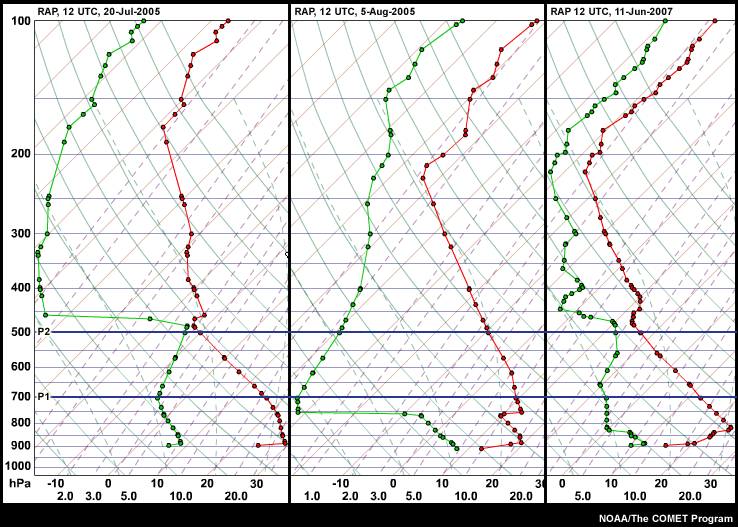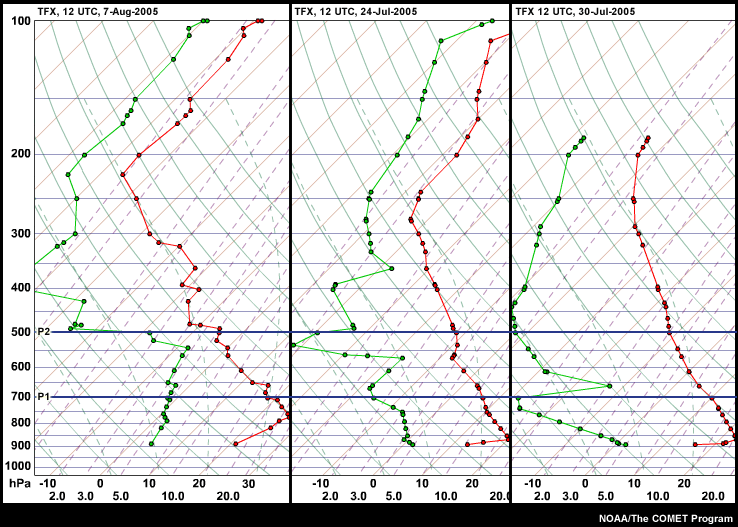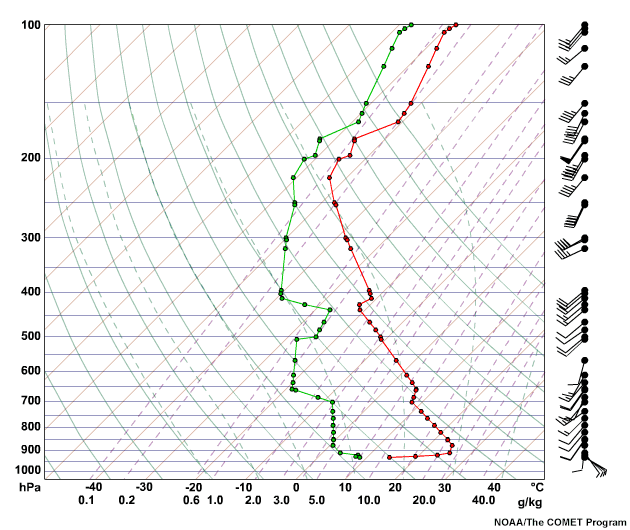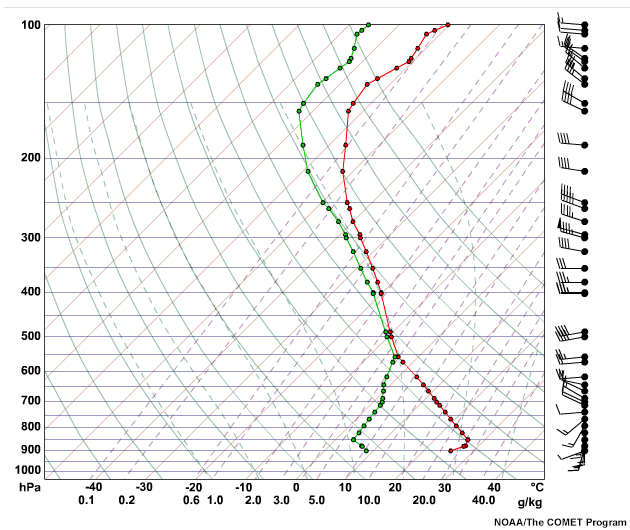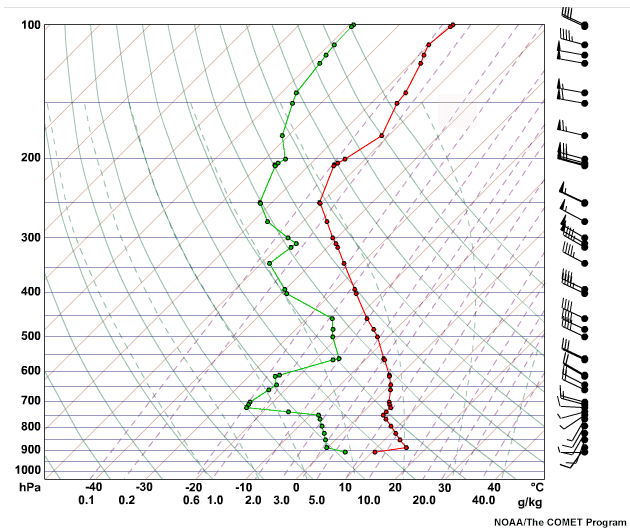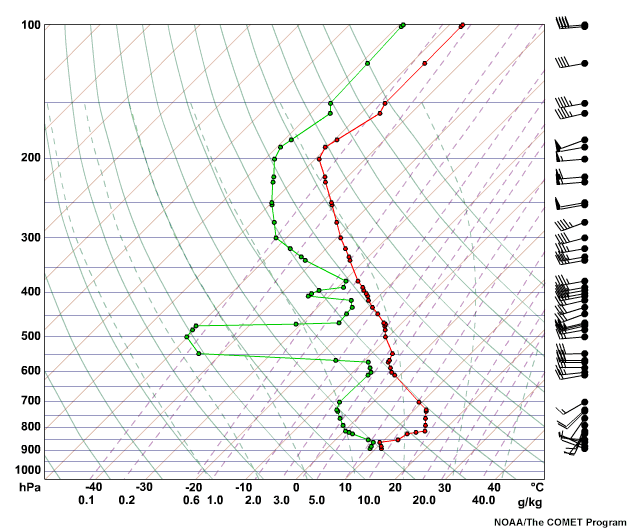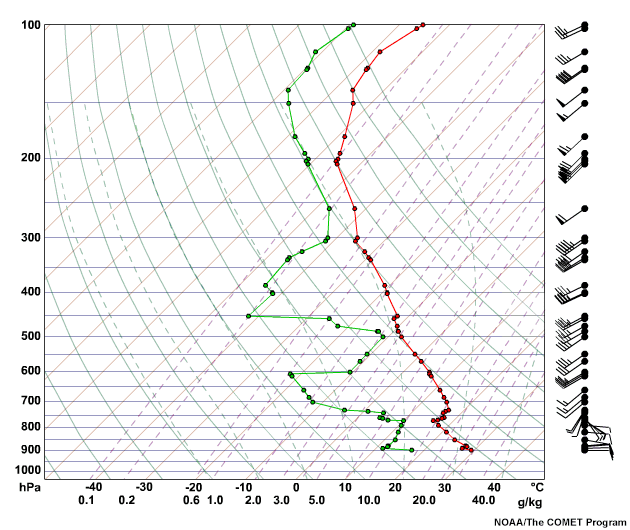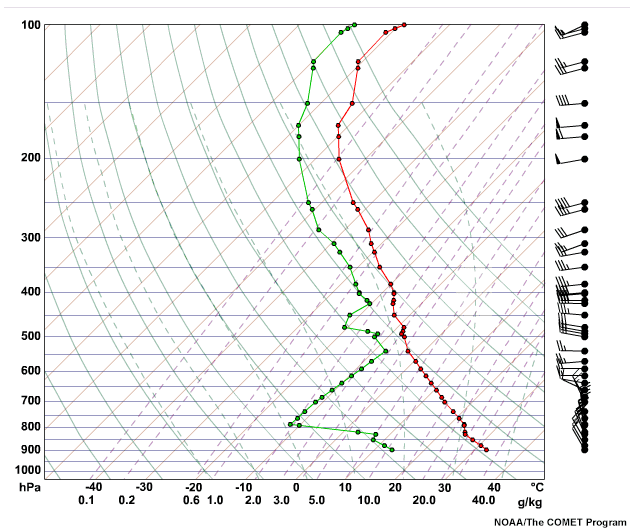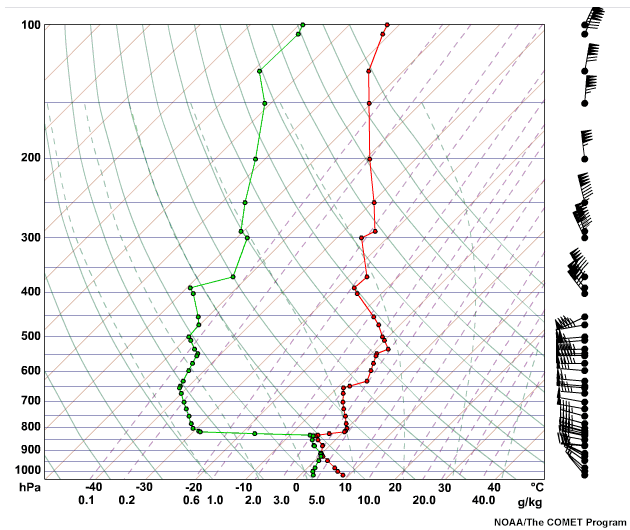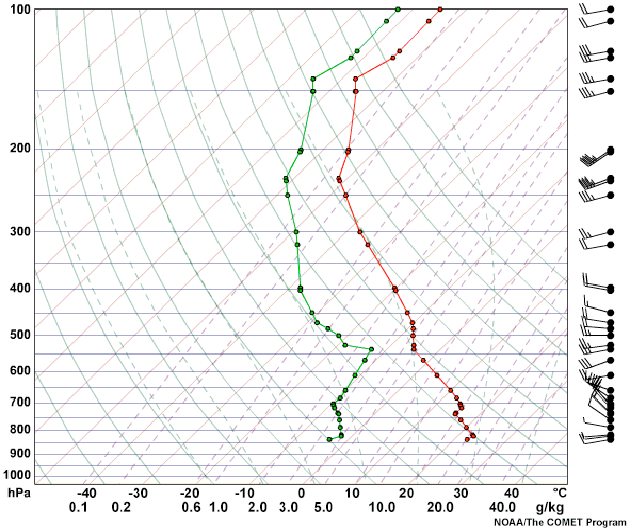Produced by The COMET® Program
Introduction
Stability/instability
Inversions
Operations
Knowing your Customer
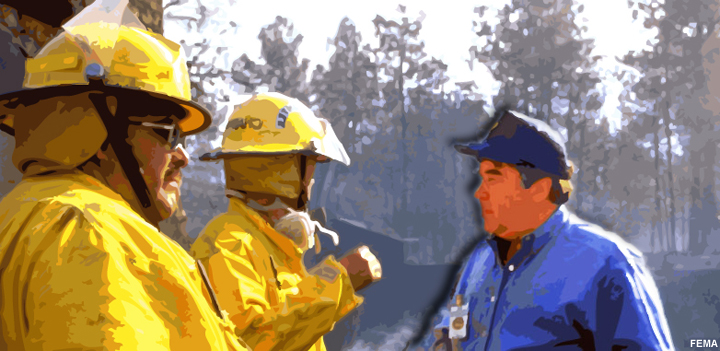
Click the arrow above to play the audio.
Click all the appropriate questions to ask the fire boss and click Done.

The correct answers are b, e, f, g, i, j, l, m, n
Inappropriate question to ask:
| Question | Reason |
|---|---|
| What is the fire danger rating for this area today? | No, the fire boss will likely be well aware of such ratings and will not look to the fire weather forecaster for such information. |
| Will low-level easterly flow prevent the inversion from mixing out today? | No, although this is an example of information that is very helpful to provide to the fire boss, you must include your interpretation of how these conditions will affect fire weather parameters. |
| Will jet streak-related vertical circulations increase baroclinicity in our area today? | No. A fire boss is unlikely to ask such a technical meteorological question. It is your job to interpret atmospheric mechanics and the potential impact on fire weather parameters so that the fire boss can make good operational decisions. |
| What is the Haines Index? | No, most fire bosses are more interested in timing and consequence information, not specific numerical values. Your job is one of providing interpretive information about atmospheric conditions and expected changes. |
| How dry is the 500-700 hPa air expected to advect into our area today? | No. Although you must be aware of how dry the mid-level air is, the fire boss is more interested in your interpretation of how this change will affect overall atmospheric conditions. |
| What are the 10- and 100-hr fuel moistures in our area today? | No, the fire boss will likely be well aware of such values and will not look to the fire weather forecaster for such information. |
Haines Index
Introduction
What is HI?
Calculation
Consistency
Interpretation
Haines Game
Welcome
Welcome to the Haines Game!
This 3-part game will help you become more familiar with the Haines Index. You'll learn how to calculate it and how to put HI values into context within a variety of atmospheric profiles. You'll learn how to distinguish, at a glance, low-Haines from high-Haines soundings and how to separate the "wheat from the chaff" - that is to distinguish bonafide extreme Haines signatures from similar, but much weaker signatures. Finally, you'll start to become "Haines Literate" as you analyze soundings for clues to support development of large convective plumes and erratic fire behavior.
Continue onto the next page to begin.
Then, click through the rest of the game segments in order.
Hand Calculation
2-4-6
For this part of the Haines Game you're going to try your hand at distinguishing soundings that have 2, 4, and 6 Haines Indices.
Five and Sixes
For this part of the Haines Game you're going to sharpen your skills as you learn to pick out a strong "6" from two moderate "5" soundings.
Haines Literacy
Congratulation on surviving the Haines Game to this point. Now comes the challenging part, reading Haines Index signatures in sounding data. To complete this level, you must answer all eight questions. Good Luck!
Smoke Management
Overview
Significance
Ventilation Index
Heights & Winds
NWS
Interactive Weather Safety Planner
Click here to open the transport winds
calculator (Microsoft Excel Format).
Try using the transport winds calculator tool to estimate transport winds for the
following data set.
What are the estimated transport winds for this data set?
(Choose the best answer.)
The correct answer is d) 23 mph @ 287 degrees
Your transport winds calculator should look like the one
shown here.
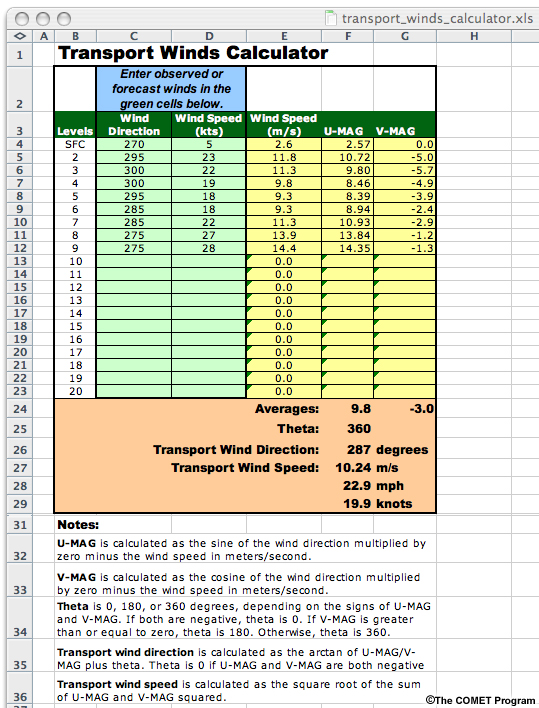
Scenario 1
Day 1
Situation
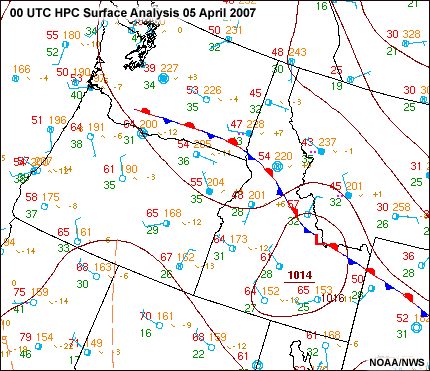
Smoke Management Scenario 1
This scenario is based on actual events that occurred April 5-7, 2007, near Idaho City, ID.
Day 1: 5-April-2007
A well-coordinated prescribed burn was planned by local district fire managers. The forecaster believed that high pressure building aloft would be accompanied by a thermally-induced surface pressure "trough". As a result, locally-enhanced convective heating would generate enough instability and surface convergence over the steep terrain to produce lift and sufficient smoke ventilation.
For several days leading up to the burn, the forecast products continued to depict this scenario. Ventilation index values were forecast above 500 or in the "good" category, which was the low threshold documented in the forest's burn plan or "prescription". The fire managers had their seasonal employees trained and in place to ignite and monitor the operation. Also, hired support aircraft were at the ready.

View the data products, then click the Spot Forecast tab to continue.
Data
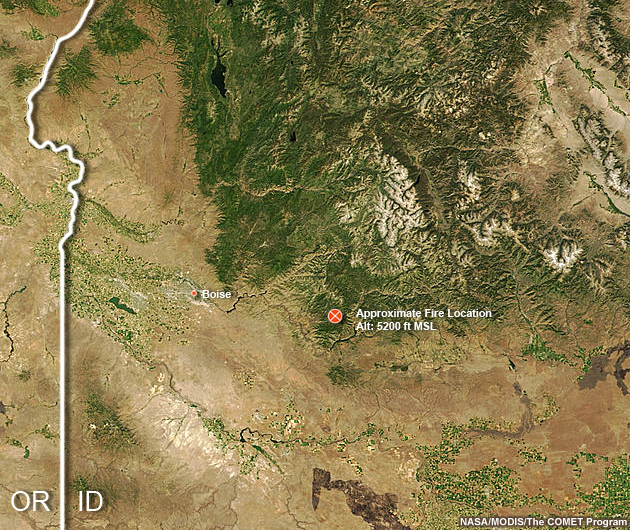
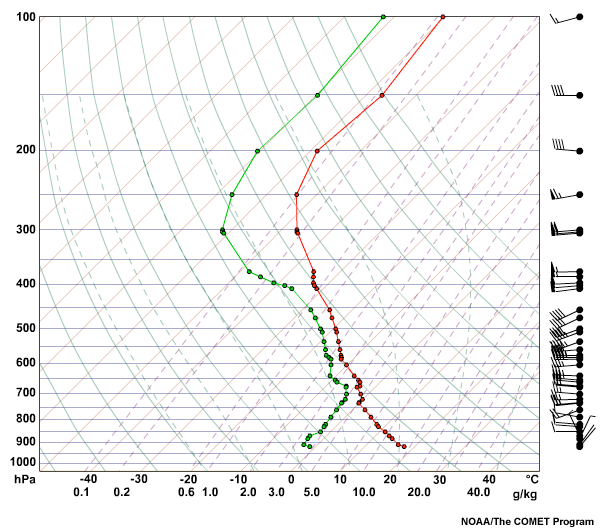
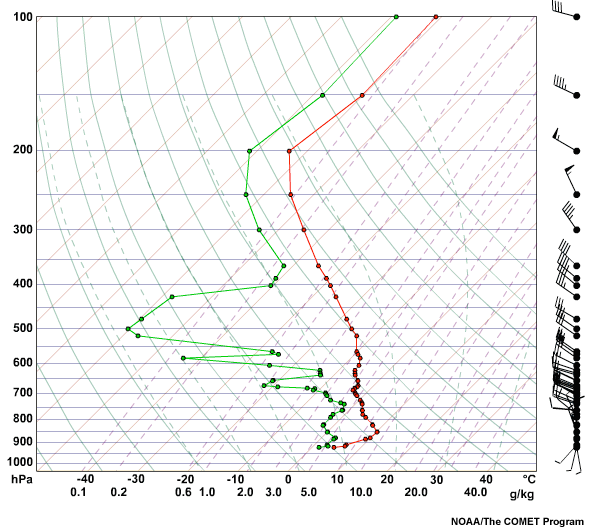
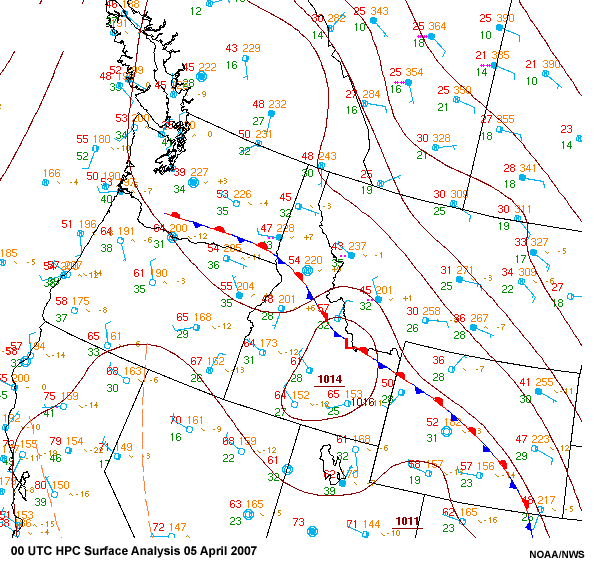

Spot Forecast
This is the final spot forecast issued by the local WFO on the day the burn was scheduled.
Review this forecast then click the Decision tab to continue.
...WARMING TREND INTO THE WEEKEND...
.DISCUSSION...
HIGH PRESSURE WILL BUILD OVER THE REGION THROUGH SATURDAY. THIS WILL BRING
WARMING TEMPERATURES TO ALL AREAS. WINDS OVER THE REGION ARE EXPECTED TO
REMAIN LIGHT. AS THE RIDGE BUILDS INTO THE AREA
TEMPERATURES ALOFT ARE ALSO GOING TO WARM WHICH MAY INHIBIT MIXING
HEIGHTS TODAY. MIXING HEIGHTS FOR FRIDAY ARE EXPECTED TO IMPROVE WHICH
WOULD HELP TAP INTO A LITTLE STRONGER WINDS...THUS BETTER
VENTILATION.
.TODAY...
SKY/WEATHER.........SUNNY.
MAX TEMPERATURE.....60 TO 65.
MIN HUMIDITY........25 TO 30 PERCENT.
WIND - EYE LEVEL....LIGHT UPSLOPE 2 TO 4 MPH THIS MORNING BECOMING UP
DRAINAGE 4 TO 6 MPH THIS AFTERNOON.
MIXING HEIGHT......5000 FT AGL.
TRANSPORT WIND.....NORTHWEST 5 TO 10 MPH.
VENTLIATION INDEX...400 FAIR.
NOAA
Decision
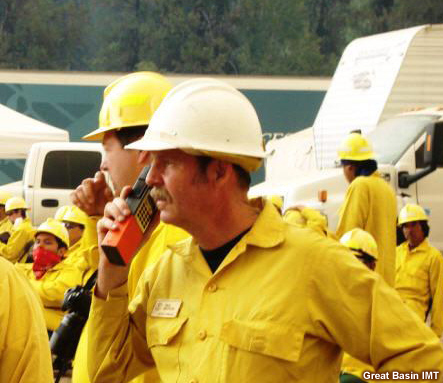
Judging from what you've seen, what do you think the fire boss for this
prescribed burn decided to do?
(Choose the best answer then click Done.)
The correct answer is b) Postponed the prescribed burn to the following day.
Fire Boss Decision: Postponed the prescribed burn to the following day. The ventilation index of 400 given in the spot forecast was below prescription. Because of this and the discussion indicating better conditions the following day, the burn boss decided to postpone the burn until the next day, Friday April 6th.
Click the Result tab to see what happened.
Result
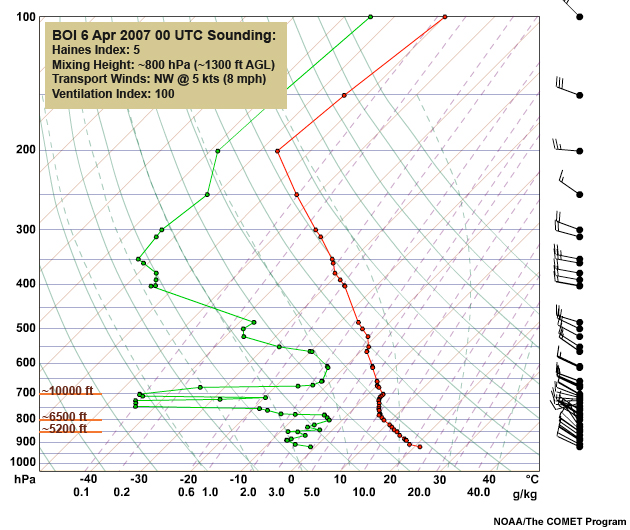
What happened on April 5th?
Examine the KBOI sounding from 6-Apr-07, 00 UTC. Note the dry adiabatic conditions
beneath a weak isothermal layer/cap near 10,000 feet. This cap is well above the
prescribed burn site elevations of 5200 to 6500 feet. Based on this profile, the
mixing height appears to be around 800 hPa, which is still above the elevation of
the burn site (5200 ft). Transport winds were northwest at 5 kts.
The data reveals that the spot weather forecast was a bit too optimistic with respect to ventilation index parameters, so it was a good call to postpone the burn until the following afternoon.
Continue onto the next page to explore Day 2.
Day 2
Situation
Day 2: 6-Apr-2007
After canceling the prescribed burn operation on April 5th, the fire boss
hoped there would be no further delays. Already, a considerable amount of
expense had been incurred bringing crews in, scheduling air support, and
waiting for the weather to cooperate.
Click the Data tab to continue.
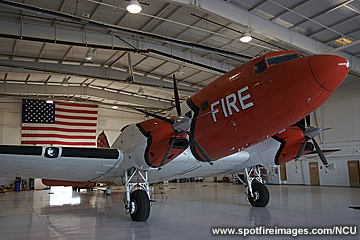
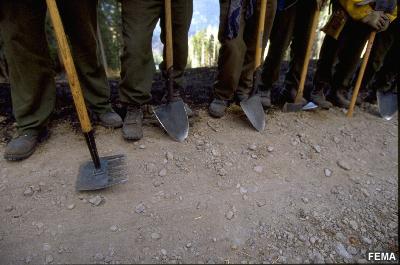
Data

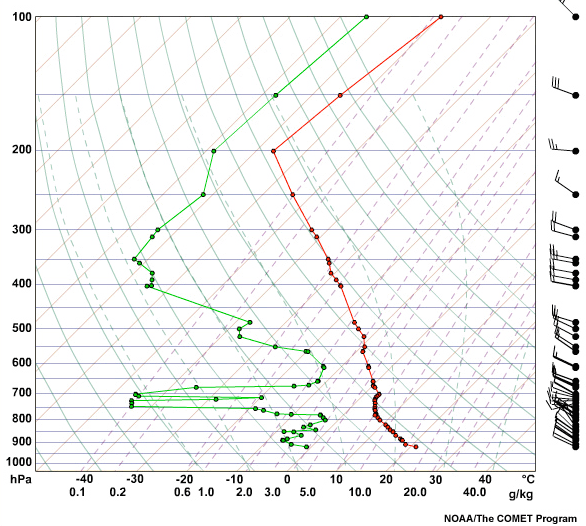
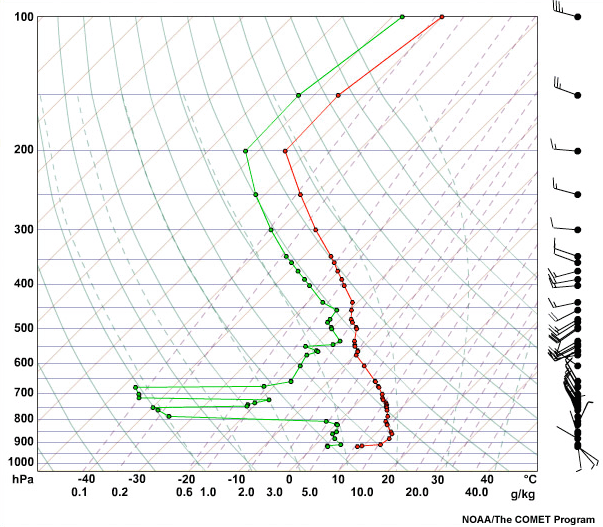
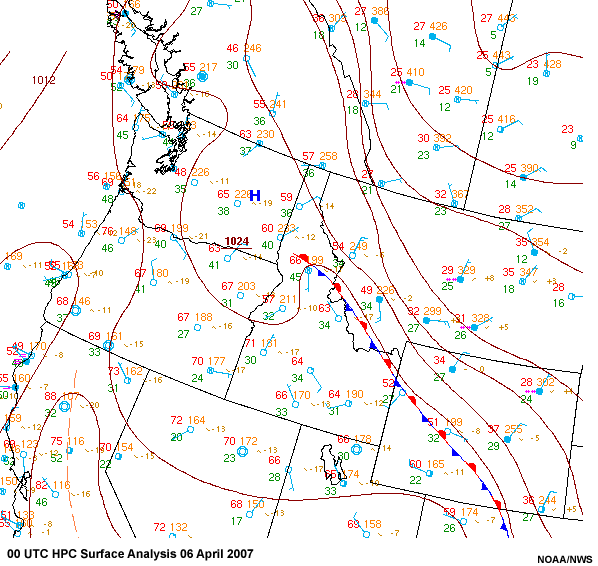
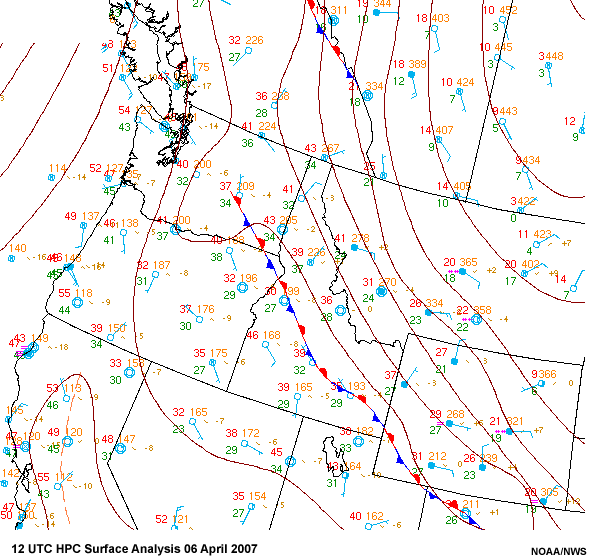
Spot Forecast
Recall from the spot forecast issued on the 5th that Friday the 6th was expected to have "better" ventilation due to higher mixing heights. Here is an updated spot weather forecast that was issued the morning of the 6th.
Review this forecast then click the Decision tab to continue.
...WARM AND DRY WITH LIGHT WINDS...
.DISCUSSION...
HIGH PRESSURE AT THE SURFACE AND ALOFT WILL ALLOW AIRMASS TO REMAIN DRY AND
STABLE. ONLY A FEW CLOUDS ARE EXPECTED WITH LIGHT UPSLOPE WINDS. INVERSION WILL BEGIN TO BREAK BY IGNITION TIME OF
1200 NOON ALLOWING MIXING UP TO 4000 FEET AGL. LATE AFTERNOON MIXING
WILL BE FURTHER ENHANCED WITH TEMPERATURES WARMING INTO THE LOWER
70S.
.REST OF TODAY...
SKY/WEATHER.........SUNNY.
MAX TEMPERATURE.....60 TO 65.
MIN HUMIDITY........22 TO 26 PERCENT.
WIND - EYE LEVEL....UPSLOPE WEST 3 TO 5 MPH.
MIXING HEIGHT......3500 TO 4000 FT AGL.
TRANSPORT WIND.....SOUTHWEST AROUND 5 MPH.
VENTLIATION INDEX...200 FAIR.
NOAA
Decision
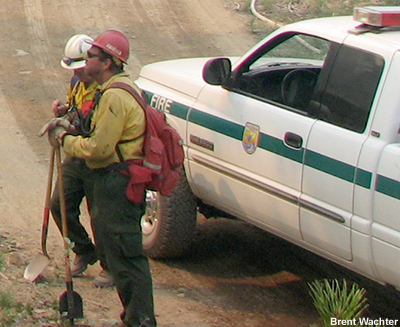
Judging from what you've seen, what do you think the fire boss for this
prescribed burn decided to do?
(Choose the best answer then click Done.)
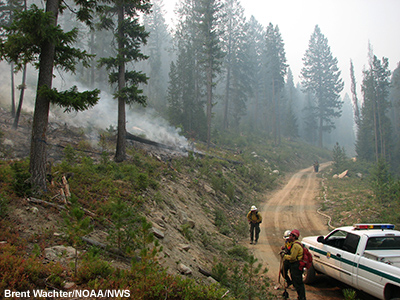
The correct answer is a) Went ahead with the prescribed burn on April 6th.
Fire Boss Decision: Went ahead with the prescribed burn on April 6th. This spot forecast indicated a "fair" ventilation index with a value of only 200. Although this was below burn plan thresholds, the forecast discussion specified that mixing would improve during the afternoon. This caused some confusion among the burn team, but after calling the forecaster and discussing the situation, the burn boss gained enough confidence to proceed with the project.
Click the Result tab to see what happened.
Result
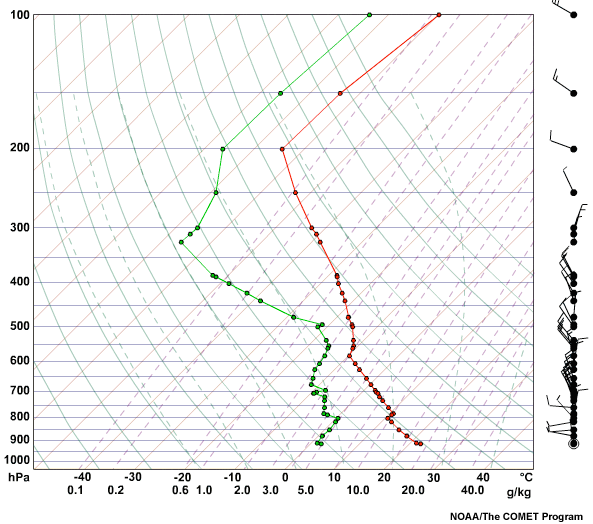
What happened on April 6th?
The afternoon upper air sounding above from KBOI on the 6th (00 UTC 7 April)
indicates that building high pressure aloft caused the isothermal layer or "cap" to
lower as a subsidence inversion. This stable layer aloft acted like a lid to close
off the Northerly wind flow above it and trap smoke below it. Feedback from the burn
boss indicated that winds on the fire were favorable in terms of ventilation and
mixing. This is consistent with observations from a nearby RAWS station with gusts
of 15 kts that afternoon. However, the densely populated valley below the burn site
had calm winds.
The prescribed burn accomplished the objectives in the burn plan, but the smoke drained into the canyons and settled right into the densely populated city which triggered an air stagnation advisory by the state regulatory agency. This resulted in stiff fines for the fire managers and negative press for the fire weather forecasters.
This case reinforces the need for fire managers and fire weather meteorologists to examine the big picture and remember that smoke from the fire is not limited to the burn area. Although the spot forecast issued on the 5th was right on the money in terms of identifying when the conditions would be within prescription constraints, smoke impacted an urban center removed from the prescribed area.
In this case, the spot forecasts did not take drainage flows into account, resulting in negative impacts for both the fire manager and the forecast office.
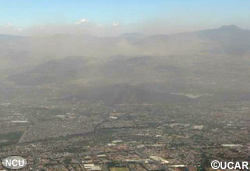
You have finished this scenario.
Continue onto the next page to explore Scenario 2.
Scenario 2
Situation 1
Smoke Management Scenario 2
This scenario is based on actual events that occurred on August 12, 2007 on the
North Fork wildfire near Cascade, ID. At the time, numerous wildfires were burning
throughout the forested areas of central Idaho.
Morning: 12-Aug-2007
A wildfire is burning in a timbered forest near Cascade, ID. You are the IMET on the
fire, and the air attack/air operations chief is under pressure to supply fire hoses
via helicopter to firefighters who are protecting about a dozen historic mountain
cabins. Helicopters can fly any time after 0900 hours local time (1500 UTC),
depending on weather conditions.

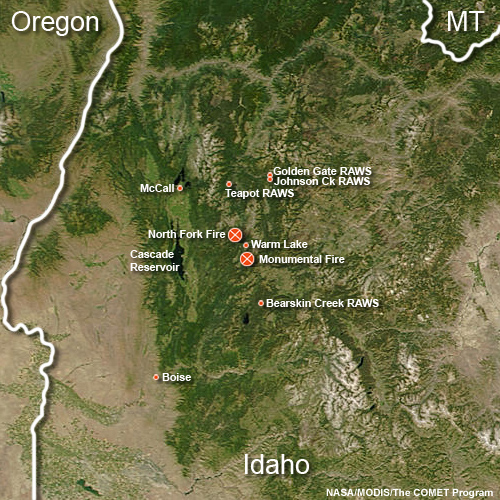
Situation 2
Strong nighttime radiation inversions have formed over the past 2 days and trapped dense smoke in the valleys and canyons. Yesterday, the inversion didn't lift until 1430 local time (2030 UTC).
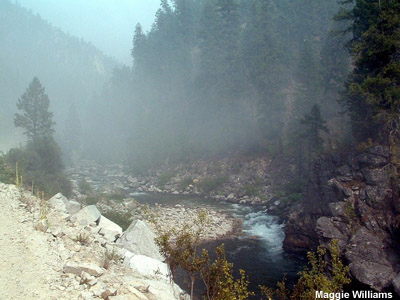
Johnson Creek near Yellowpine, ID 2030 UTC / 230 pm 11 Aug 2007.
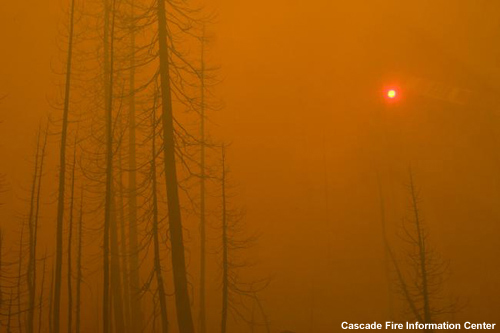
Smokey skies hindered air operations.
Situation 3
Helicopters can't fly under the current conditions. If the smoke persists, aviation assets may be reassigned to another incident. As an alternative, pack trains of mules could be arranged through a local outfitter to deliver the equipment and supplies to the firefighters. However, this option could introduce more risk of injury to personnel on the ground.
Fire aviation managers are getting anxious for a window of time for their aircraft to fly. Not only do the firefighters need equipment, but the Boise National Forest pays a hefty price to keep the aircraft and the pilot in "stanby mode".
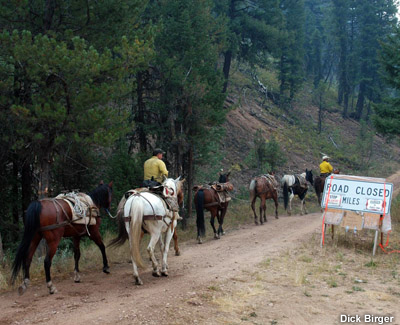
Mule pack train with emergency firefighting equipment, Payette National Forest
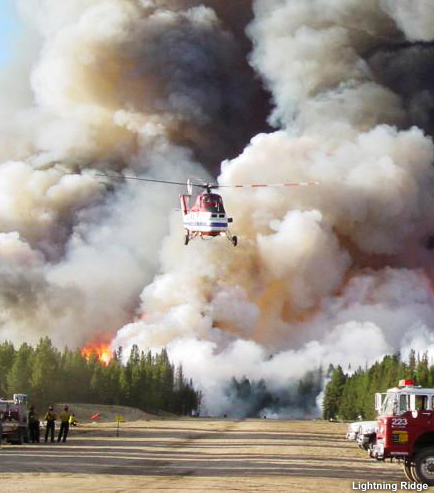
Burnout operations at Landmark, ID
Click the Data tab to continue.
Data 1
Synoptic Setup
For the last 2 days high pressure aloft has intensified over Colorado while a strong
trough moved toward the Pacific Northwest Coast. A thermally induced surface
pressure trough led to a weak pressure gradient and light winds, stregthening the
nighttime radition inversion.
A strong upper level jet streak is forecast to cross through the area from the Southwest with stronger winds forecast near ridgetop (6600 to 7000 ft or near 800 hPa).
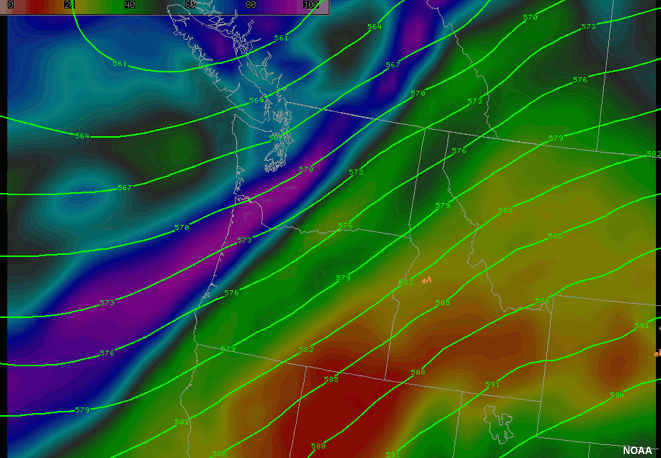
Data 2
Observed Sounding, Boise, ID
The sounding from Boise is 70 miles southwest of the fire. In the fire area, valleys
are near 5200 ft in elevation or near 850 hPa. Midslope is between 5800 and 6200 ft
or about 825 hPa. Ridgetop level in the area from 6600 to 7000 ft ot about 800 hPa.
From the 1200 UTC BOI sounding, winds of 20 kts were observed between 850 to 800 hPa.
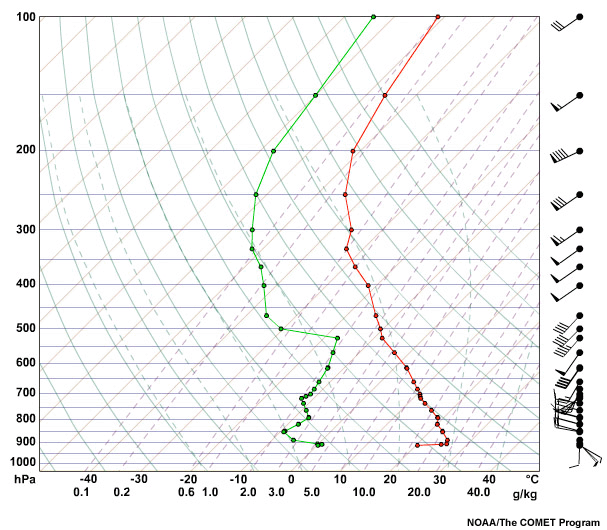
Data 3
Model Soundings
Model soundings indicate that winds between 600-700 hPa will increase to 35 to 40
kts over the next 6 hours. These winds could mix down and accelerate through
elevated passes and channel through major river drainages. Keep in mind that even
though ridges are 6600 to 7000 ft (or about 800 hPa), many of the peaks extend to
9000 ft or more.
If winds do increase, this situation will provide enough mixing to scour out the smoky inversion, allowing better visibility for the helicopter pilots to fly. On the other hand, if winds exceed 35 kts, the aircraft will remain grounded for safety reasons, costing thousands of dollars of lost flight time. You need to determine whether winds will be sufficient to mix out the smoke, and whether they will remain within criteria for safe aircraft operations.
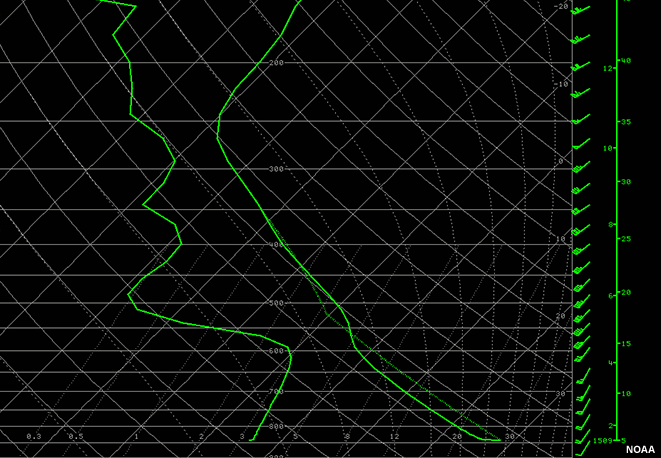
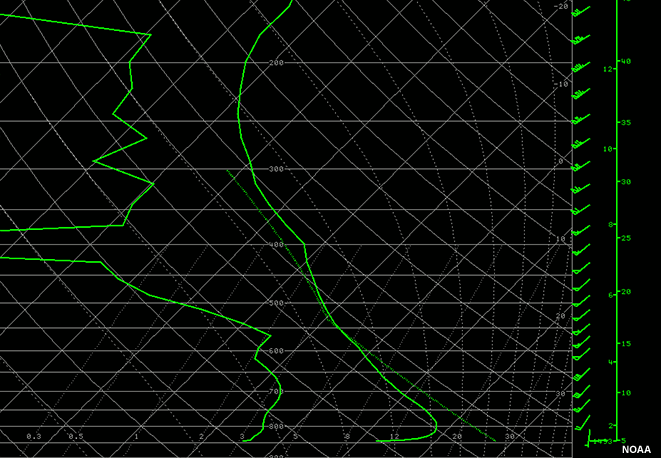

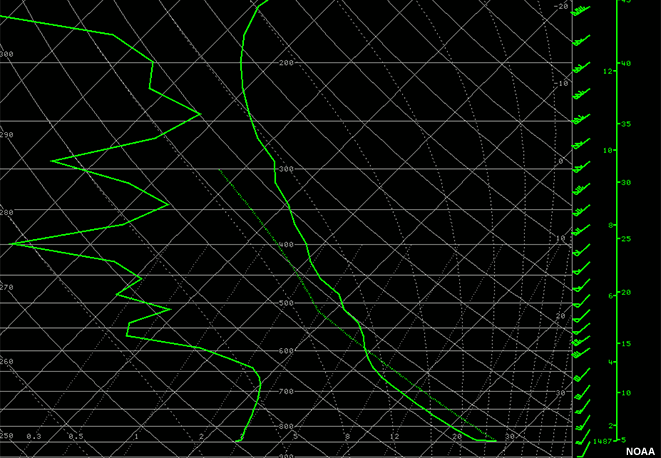
Data 4
Local PIBAL
Conditions were too smoky to release a sounding at the fire. An experienced IMET
assigned to a nearby fire was able to track a PIBEL at 0815 local time (1415 UTC)
with the following results. Notice that the winds increased above 10 kts near
ridgetop (6600 to 7000 ft), and 13 minutes into the flight, winds were over 20 kts.
If these conditions are truly representative of you fire location, then the
inversion should begin lifting within a few hours and the smoke should clear.
Click the Smoke Management tab to continue.
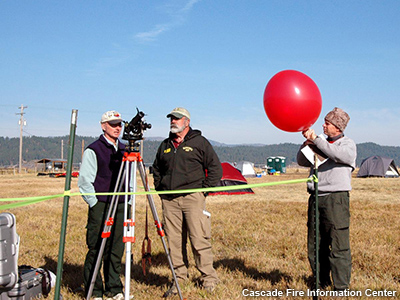
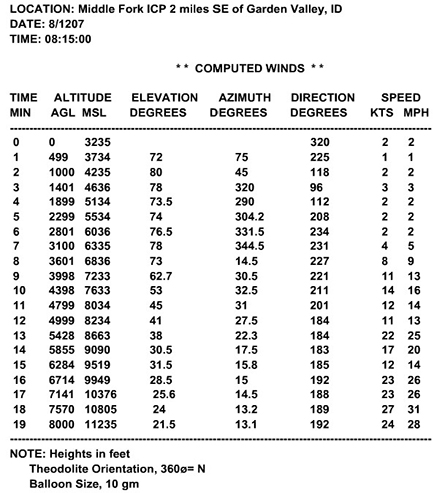
Smoke Management 1
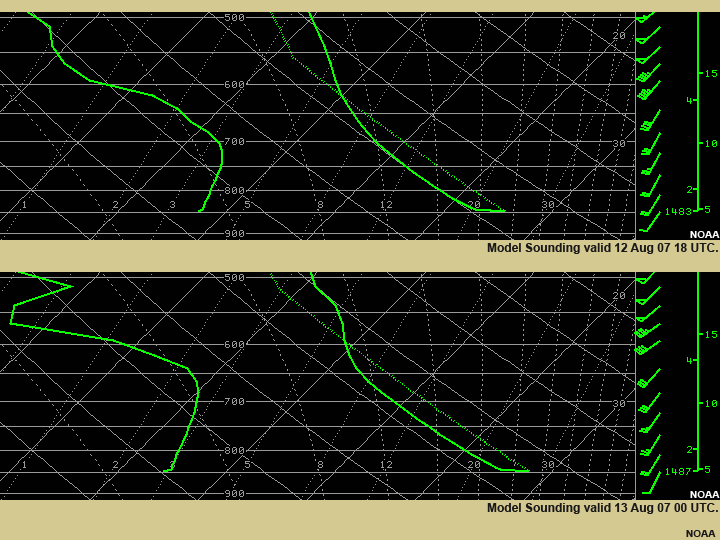
What are the forecast mixing heights at 18 UTC and 00
UTC?
Type a value in each box.
The mixing height at 18 UTC is forecast to be 10,000 ft or approximately 620 hPa, and increase to ~13,000 ft or near 600 hPa at 00 UTC (1800 LT).
Smoke Management 2

At 0000 UTC, the transport winds are near 210
degrees at 26 kts the resulting ventilation index is 13,000 ft x 26
kts = 33,800. The index is then calculated by dividing this value by
100, which gives a ventilation index of 338 which corresponds to a
category of excellent. Winds near the top of the mixed layer are
above the 35 kt level that could ground aircraft, however the
transport winds are expected to remain below 35 kts, and helicopters
should be able to fly.
Adjective ratings for ventilation index used in this area are:
< 200 Poor
200 < 500 Fair
500 < 700 Good
700 + Excellent
Result 1
Spot Forecast
This was the spot forecast issued on that day.
The forecast called for winds to increase, but remain below the criteria to ground helicopters. The forecast strong winds and deep mixed layer resulted in a ventilation forecast to be excellent.
...RED FLAG WARNING IN EFFECT FROM NOON MDT TODAY THROUGH THIS EVENING FOR GUSTY WINDS...
.DISCUSSION...
AFTER THE INVERSION BREAKS AROUND
NOON... LOW LEVELS IN THE ATMOSPHERE WILL BECOME VERY DRY. THE
BIGGEST THREAT WILL BE GUSTY WINDS TO 30
MPH WITH A JET STREAK THAT WILL MIX DOWN TO RIDGE LEVEL. IN
ADDITION...HUMIDITIES WILL BOTTOM OUT IN THE SINGLE DIGITS. COOLER WEATHER
WITH HIGHER HUMIDITIES WILL COME IN NEXT WEEKEND AS AN UPPER TROUGH OFF THE
NW COAST COMES CLOSER.
.TODAY...
SKY/WEATHER.........SMOKEY THIS MORNING UNTIL
INVERSION BREAKUP AROUND 1130. BECOMING SUNNY.
MAX TEMPERATURE.....88 TO 93.
MIN HUMIDITY........6 TO 10 PERCENT.
WIND - EYE LEVEL....SOUTHWEST 8 TO 10 MPH WITH
GUSTS TO 30 MPH IN THE AFTERNOON.
HAINES INDEX.........6 HIGH.
MIXING HEIGHT......14500 FT AGL.
TRANSPORT WIND.....
SOUTHWEST AROUND 25 MPH
.
VENTLIATION INDEX...725 EXCELLENT.
NOAA
Result 2
What Happened?
Weather observations from Johnson Creek Fire RAWS station (at an elevation of 4925
ft in a tight drainage South of Yellowpine, Idaho) revealed a significant hourly
change in weather conditions, indicative of the inversion break-up that occurred
between 1100 to 1200 local time (1700 and 1800 UTC). During this hour, wind gust
strengthened from 8 to 21 kts. Relative humidity fell from 32% to 12% while
temperature increased 12°F in one hour.
Field observers reported that fire behavior associated with this rapid weather change intensified exponentially within a span of about 10 minutes. Single-tree torching transitioned to group torching only briefly before entire stands of timber were consumed.
Field observers and satellite pictures indicated a distinct band of Altocumulus Castellanus (ACCAS) after 1200 Local (1800 UTC) coincident with the time that the model was forecasting enhanced vertical motion associated with a weak short wave trough. This instability allowed the inversion to break up. Satellite imagery shows the smoke in the valleys mixes out as the inversion breaks, resulting in improved visibility.
Johnson Creek RAWS NOAA
| Local Time | Temp | RH% | Wind | Gust |
|---|---|---|---|---|
| 1100 | 71 | 32 | 0.0 | 3.0 |
| 1200 | 83 | 12 | 3.0 | 8.0 |
| 1300 | 83 | 9 | 6.0 | 21.0 |
Result 3
Operations
Wind speeds remained below 30 kts, allowing fire managers to meet their objectives
safely and bring the needed equipment to the fire fighting crews.
This scenario illustrated a situation where stronger winds were needed to mix smoke out of the valley before air operations could begin. However, had winds increased too much, air resources would have been grounded due to high winds.
As a forecaster, you need to be aware of how the weather affects your customers and their criteria for safe operations.
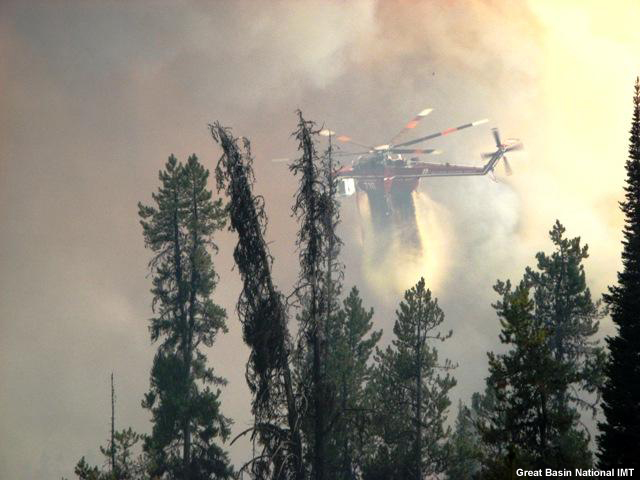
Contributors
COMET Sponsors
The COMET® Program is sponsored by NOAA National Weather Service (NWS), with additional funding by:
- Air Force Weather Agency (AFWA)
- Australian Bureau of Meteorology (BoM)
- Meteorological Service of Canada (MSC)
- National Environmental Education Foundation (NEEF)
- National Polar-orbiting Operational Environmental Satellite System (NPOESS)
- NOAA National Environmental Satellite, Data and Information Service (NESDIS)
- Naval Meteorology and Oceanography Command (NMOC)
Principal Science Advisor
- Dan Borsum — NWS
- Coleen Decker — NWS
Project Lead
- Dr. Elizabeth Mulvihill Page — UCAR/COMET
Instructional Design
- Dwight Owens — Alphapure Design Studio
Computer Graphics/Interface Design
- Steve Deyo — UCAR/COMET
- Brannan McGill — UCAR/COMET
Multimedia Authoring
- Dan Riter — UCAR/COMET
Audio Editing/Production
- Seth Lamos — UCAR/COMET
Audio Narration
- Hildy Kane — UCAR/COMET
COMET HTML Integration Team 2020
- Tim Alberta — Project Manager
- Dolores Kiessling — Project Lead
- Steve Deyo — Graphic Artist
- Gary Pacheco — Lead Web Developer
- Justin Richling — Associate Scientist
- David Russi — Translations
- Gretchen Throop Williams — Web Developer
- Tyler Winstead — Web Developer
COMET Staff, Spring 2008
Director
- Dr. Timothy Spangler
Deputy Director
- Dr. Joe Lamos
Administration
- Lorrie Alberta
- Michelle Harrison
- Hildy Kane
Graphics/Media Production
- Steve Deyo
- Seth Lamos
- Brannan McGill
Hardware/Software Support and Programming
- Tim Alberta (IT Manager)
- James Hamm
- Ken Kim
- Mark Mulholland
- Carl Whitehurst
- Malte Winkler
Instructional Design
- Patrick Parrish (Production Manager)
- Dr. Alan Bol
- Lon Goldstein
- Dr. Vickie Johnson
- Bruce Muller
- Dwight Owens (Alphapure Design Studio)
- Marianne Weingroff
Meteorologists
- Dr. Greg Byrd (Project Cluster Manager)
- Wendy Schreiber-Abshire, Senior Project Manager
- Dr. William Bua
- Patrick Dills
- Dr. Stephen Jascourt
- Matthew Kelsch
- Dolores Kiessling
- Dr. Arlene Laing
- Dr. Elizabeth Mulvihill Page
- Warren Rodie
- Amy Stevermer
- Dr. Doug Wesley
Science Writer
- Jennifer Frazer
Spanish Translations
- David Russi
NOAA/National Weather Service — Forecast Decision Training Branch
- Anthony Mostek (Branch Chief)
- Dr. Richard Koehler (Hydrology Training Lead)
- Brian Motta (IFPS Training)
- Dr. Robert Rozumalski (SOO Science and Training Resource [SOO/STRC] Coordinator)
- Ross Van Til (Meteorologist)
- Shannon White (AWIPS Training)
Meteorological Service of Canada Visiting Meteorologists
- Phil Chadwick
- James Cummine
